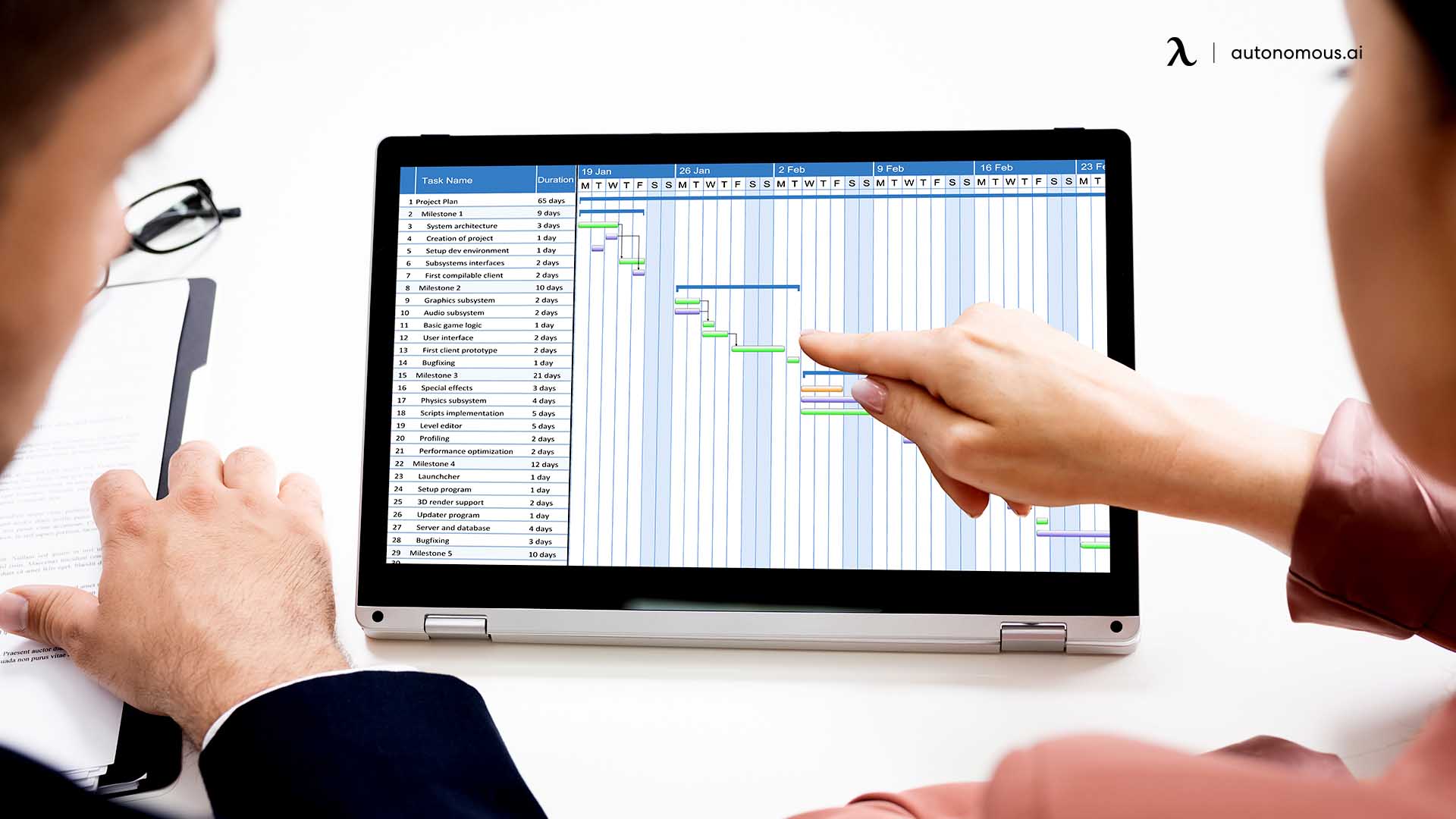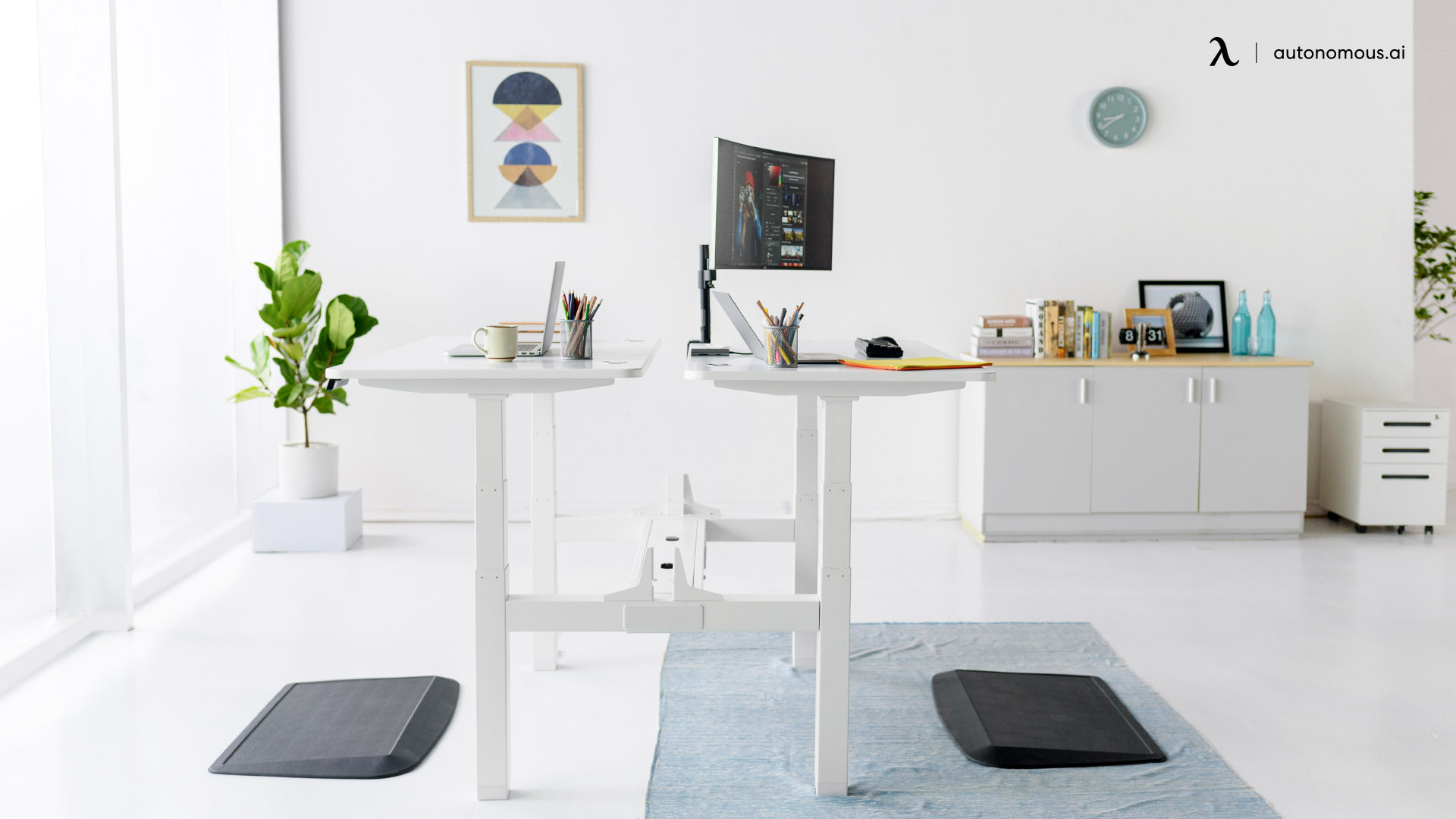/https://storage.googleapis.com/s3-autonomous-upgrade-3/static/upload/images/new_post/how-to-build-hybrid-work-culture-2291-1624953693472.jpg)
Things are changing with the way people work. In the past, most people went to the office, but now they are using a hybrid workplace. However, the hybrid work culture is also different, and it’s something that managers and employers should focus on.
Remember, employees want to feel like you care about them. The best way to do that is to focus on their new ways of doing things.
Since the hybrid work model is here to stay, which includes both office and remote work, you need to be prepared on building a successful hybrid work culture and policy.
The Importance of Work Culture to Employee Experience & Company Success
Before you can sustain a hybrid culture, you must implement one. Typically, sustaining a hybrid culture for business focuses both on the remote employees and those in the office. There needs to be consistency across the board to promote the employee experience. With that, the company succeeds.
Learning how to build company culture isn’t the first step. Instead, you must understand the importance of the hybrid work culture and how it pertains to the employee experience.
Many companies are responding to the reality of a hybrid workforce by focusing more on the employee experience. However, that doesn’t just mean offering better benefits and perks. In fact, the entire workplace culture must change.

While COVID-19 pushed those emerging business trends, they were already there. More and more companies are focusing on remote hybrid work where people spend some of their time at the office and then at home. Fixed work used to be the norm where people either worked remotely all the time or at the office full-time.
Most companies realized that they must work harder for the employees. That includes focusing on the hybrid work culture since it is here to stay. Therefore, the answer is in EX (Employee Experience).
Many people think of EX as the systematic way to approach employee needs to create a more meaningful experience for those at work.
It’s not really focused on changing behaviors with perks, employee engagement, and benefits. Instead, it’s about the hybrid culture for the business. With that, you put concepts like belonging, honesty, purpose, and trust at the top of your agenda. From there, you must learn to sustain the hybrid culture throughout your years of implementing it.
Everyone understands that 2020 was all about reacting to a situation that was out of their control and never seen before. However, now is the time to focus on the improvements you can make to the flexible working arrangements and culture. From there, you can cement those changes and make them permanent for your business operations and strategy.

In a sense, employee experience affects every aspect of your culture. Before you get started, you must understand that EX isn’t only an HR or CEO problem. Every stakeholder in the business needs to think about this. Building new strategies requires executives from different departments to collaborate and connect to execute and develop appropriate plans. However, once you do that, you reap the benefits.
- CEOs – They can connect with people authentically within the company to listen and respond to anything others have to say.
- HR Leaders – These people can attract the best talent, train them, and work on ways to keep them with the hybrid work culture. All the while, they’re building a stronger hybrid culture for the business.
- Comms Leaders – They can improve information flow to provide actionable insights on specific messages.
- IT Leaders – These people consolidate the various tools using smart integrations and features that are easy to use.
Statistics of the Rise of the Hybrid Work Model

Many business leaders don’t go on what others say and focus more on the statistics. Here are a few things to ponder when deciding if you want to build a hybrid workplace culture:
- Before 2020, about 58 percent of all employees were not satisfied with their daily work. The way to improve on that is by focusing on the employee experience. Ultimately, that includes the ability to sustain a hybrid culture.
- About 75 percent of all CEOs support the employee experience. That shows an appetite for change, which is a great thing. However, 84 percent of all HR leaders claim that EX is the priority for them, but only nine percent of those people have a plan. It’s crucial to support the goal, but you must take action to change anything.
- Roughly 63 percent of all high-growth companies offer hybrid work models. However, few of them have implemented a hybrid work culture or even know how.
Tips to Build a Hybrid Workplace Culture

Ex is often hard for hybrid teams. They’re dispersed, fluid, and difficult to reach. Therefore, you may have to deal with the “us versus them” mentality, poor communications, and biases between those working in the office and those at home. Therefore, the best strategy for hybrid teams focuses on:
- Building community – You should focus on inclusion and diversity to create a sense of belonging.
- Communicating efficiently – It’s important to reach people anywhere with relevant information. However, you must also hear what they all say and how they might improve the business altogether.
- Showing care – You could find easy ways to support your employee’s mental health. With that, it’s imperative to ensure that knowledge is easy to share and find. This includes using the right internal communication tools and having an internal knowledge base.
Here are a few tips to help you learn how to build company culture within your teams:
Share the Value of Connection

Let the executives know that it’s worth it to be more active and engage with employees. When everyone is connected, there is more profitability and less turnover. The staff feels a sense of community, which helps them relax and get more done. They can also talk to other team members when the need arises, which helps them feel less lonely when they’re working remotely.
Get Your Team Together

Employee experience affects everyone, so don’t just leave it all to the CEO. Recruit your team throughout the ranks of your senior leadership because they all have a role in this.
With that, you can also keep your employee teams together by allowing them to input their ideas or hopes. Often, this is all that’s needed for the staff to feel engaged and excited about the change to the hybrid work culture.
Empower Adopters
Some people are slow on the uptake. It’s not that they don’t want to change, but they’re resistant. However, you’re bound to have a few executives that catch on fast. They’re more excited about the options and want to make those changes immediately. Encourage them because they are natural cheerleaders who can build momentum, so the process speeds up.
Assign Expertise Areas

Empower and support your senior team members so that they’re playing to their strengths. You can encourage them to lead for the topics that they’re passionate about and that matter to them. When you do that, they’re naturally inclined to develop and sustain the hybrid culture.
Topics can include things like recognition, purpose, and inclusion.
Show Others What It Looks Like
Now is the time to inspire others with examples of what you want to see in your company. When you do that, they have an idea of what’s to come, which could excite them even more.
Steps to Build a Hybrid Workplace Culture
Here are the steps you must take to build a hybrid workplace culture:
1. Be Consistent and Flexible
Remember, job candidates often expect remote or hybrid work options. Since the competition is fierce to find the best talent, you must be flexible to accommodate the needs of each employee. While the hybrid culture for business isn’t the new normal yet, it is sure to be soon.
Having a flexible workspace is crucial. Most companies have done away with the traditional cubicle or office. Now, employees can sit at any desk and start working immediately. This is great if you’ve got limited room and some of your staff work from home periodically.
Autonomous has everything you need for hybrid working and hybrid work culture. It’s often a good idea to invest in the SmartDesk Hybrid. Having multiple desks like this ensures that each one can be adjusted to meet the needs of the person sitting there at that time.
While all Autonomous desks have preset settings, these are already integrated with appropriate space management software. In a sense, you’re hoteling office space when needed. With that, a person can reserve an office space, which saves a lot of time and effort, especially when you have specific rooms or areas that have different equipment.
For example, you may have a “print” desk and a “fax” desk. Most people don’t need to print and fax all the time during the day, so those spaces could be reserved when they’re required.
With the Autonomous Hybrid OS, you have everything you need to create these spaces. Each seat can be accounted for, and it can also include different perks, such as near a window or including a desk lamp. You may also indicate what assets there are, such as a sit-stand desk and an ergonomic chair.
2. Embrace Inclusiveness
Inclusivity and equality are things everyone wants. An employee with a big home office isn’t as likely to commute to work as someone who has a kitchen table or lives with roommates.
HR managers need to focus on the office space to include home offices. That way, the right technology and productive work environment are available. While it can cost more, many companies are outfitting their employee’s homes with the right equipment and tools for the job.

Another concern some companies have when focused on building a hybrid work culture is about communications. Everyone needs to be able to talk to each other and collaborate on important things. Therefore, you should ensure that each at-home employee has the basic setup as in the office.
That can be achieved in many ways. For example, you might require them to download the tools you often use at the office. Another alternative is to provide them with a business laptop that they must sign in and out each time.
The biggest issue when trying to sustain the hybrid culture is unconscious bias. For example, employees who tend to spend more time at the office might get promoted more frequently. Protocols must be in place for equality purposes.
3. Acknowledge Productivity for Remote Work
Learning how to build a company culture doesn’t just mean thinking about those in the office. Blanket policies, unfair space allocation, and prescriptive schedules kill productivity benefits for working remotely or using the hybrid model.

It’s crucial to maximize productivity by making sure that there are employees in the office, but remote work is also a positive alternative. As long as a task can be done at home efficiently, there’s no reason for them to be at the office!
Reward your employees for being efficient and productive. Instead of focusing more on interactivity, let them choose how they are more effective at their jobs. You are sure to be happier with the levels of productivity.
4. Focus on Mental Health

Working remotely means less physical human interaction. Therefore, you should keep mental health at the forefront to boost hybrid work culture. Healthcare benefits are expected by most employees, so HR managers need to have protocols in place to optimize more human interaction.
5. The Business Needs Prevail

Attendance thresholds are a debate among many employees and employers. Without your staff, you can’t do anything, so flexibility in hybrid culture for business is important. However, there must be balance. Technology does offer a framework to help you manage people better but never forget about the needs of the business.
Conclusion
Learning how to build a hybrid workplace culture means focusing on what you currently have and changing it slightly. The goal here is to create a hybrid work culture that meets everyone’s needs. When you do that, you’re sure to have happier employees, less turnaround, and see more productivity from the group.
Autonomous is paving the way to help you sustain a hybrid culture. With its many tools, you can create the best environment for those in the office and at home.
Subscribe for a 10% discount on your first order.
Sign up for our weekly update and be the first to know about our specials & promotions.
Verbreiten Sie es weiter


/https://storage.googleapis.com/s3-autonomous-upgrade-3/production/ecm/240417/april-10-off-offer-2024-1920x540-CTA.jpg)
/https://storage.googleapis.com/s3-autonomous-upgrade-3/production/ecm/240417/april-10-off-offer-2024-720x1200-CTA.jpg)
/https://storage.googleapis.com/s3-autonomous-upgrade-3/production/ecm/240415/bulk-order-apr-2024-offer-720x1200-CTA-min.jpg)

/https://storage.googleapis.com/s3-autonomous-upgrade-3/static/upload/images/new_post_author/admin-1.png)